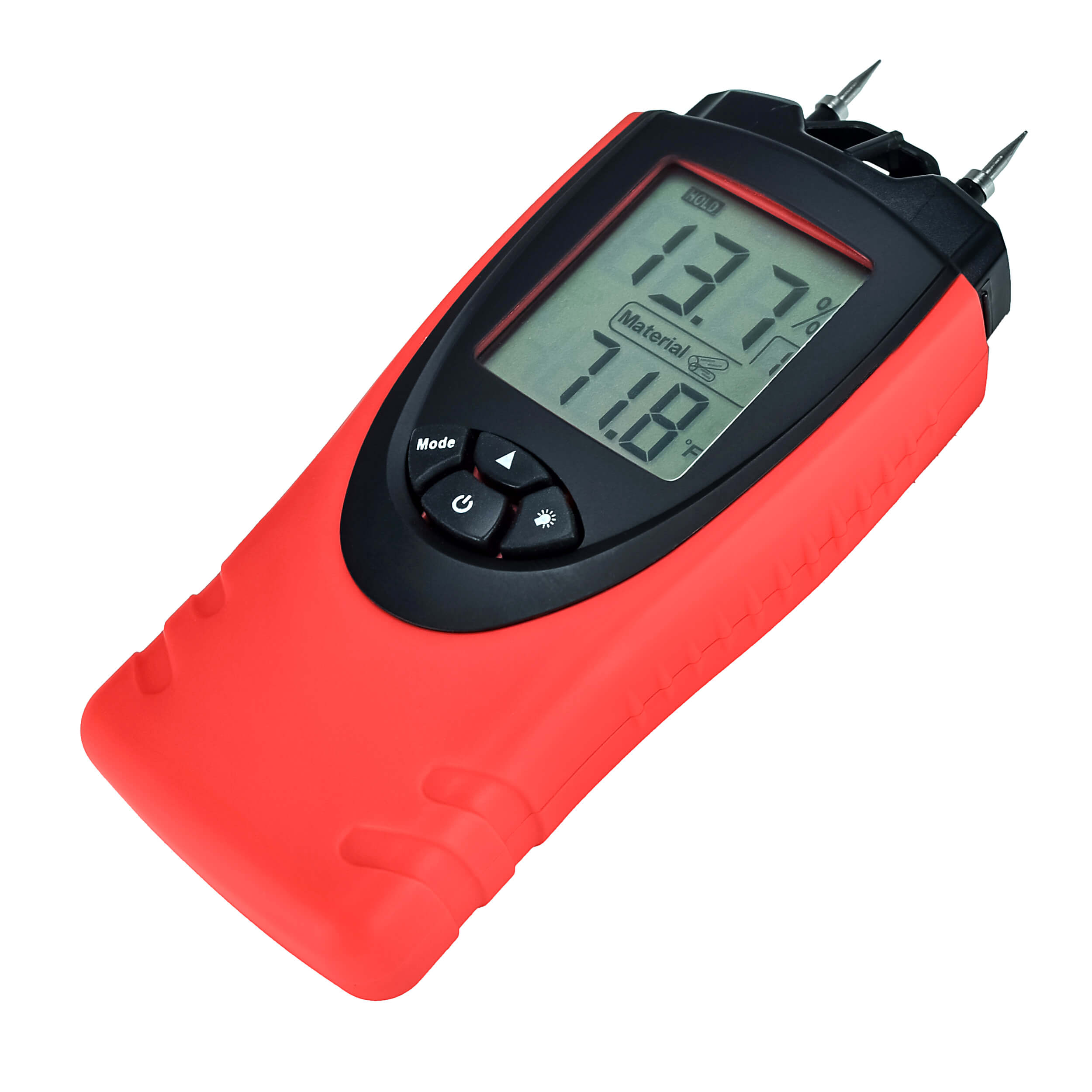How a Moisture Meter Can Improve Your Construction Tasks and Protect Against Damages
How a Moisture Meter Can Improve Your Construction Tasks and Protect Against Damages
Blog Article
Recognizing the Relevance of a Moisture Meter in Stopping Mold and Water Damage in your house
In the realm of home maintenance, the existence of dampness can commonly be a quiet yet formidable foe, capable of causing prevalent mold and mildew development and insidious water damages if left unchecked. Comprehending the value of a dampness meter in this battle is not simply a choice yet a calculated necessity.
Value of Moisture Discovery
Reliable moisture detection techniques are critical for safeguarding properties and preventing possible mold growth and water damage. Wetness can leak right into different structure materials, bring about architectural concerns and wellness threats. By utilizing a moisture meter, building proprietors can proactively identify areas prone to excess wetness, permitting prompt treatment and reduction strategies.
Moisture meters supply precise analyses of wetness levels in different materials such as concrete, drywall, and timber. This information helps in determining locations of problem, even in hard-to-reach or surprise areas. Early discovery of moisture accumulation allows prompt repairs or changes to avoid more damages.

How Moisture Meters Work
Wetness meters play an essential duty in the aggressive recognition of excess wetness, assisting in the avoidance of possible mold and mildew growth and water damage by supplying precise readings of dampness levels in different building products. Some progressed moisture meters combine both pin and pinless innovations for comprehensive moisture detection. Understanding how moisture meters feature is necessary for prompt and exact moisture level evaluations, allowing effective preventive steps against mold and water damage.
Finding Early Indication
Upon preliminary assessment of a residential or commercial property, acknowledging refined indications of excess dampness ends up being vital in the early discovery of possible mold growth and water damage. Some common very early indication consist of musty odors, water stains on walls or ceilings, peeling off paint or wallpaper, and deformed or tarnished surfaces. Moldy smells commonly indicate the existence of mold or mildew, even if no noticeable indications appear. Water spots can indicate leakages or infiltration, while peeling paint or wallpaper might be an outcome of wetness compromising the bond of these products to the surface area. Deformed or stained surface areas, such as distorting floorboards or discolored drywall, are clear indicators of water damages. Furthermore, an increase in allergic reaction symptoms or respiratory system problems among owners may recommend the presence of mold and mildew because of excess dampness. By immediately identifying and attending to these early caution signs, homeowners can alleviate the risk of substantial mold and mildew development and water damage in their homes.
Stopping Mold Growth
Recognizing very early caution indications of excess wetness within a residential property not only makes it possible for punctual detection of prospective mold and mildew development and water damages yet additionally offers as a positive procedure these details in preventing the expansion of mold and mildew. To effectively prevent mold and mildew development, it is critical to resolve any type of sources of moisture without delay. This can consist of taking care of leaks in pipelines, roof coverings, or windows, guaranteeing correct air flow in damp locations like kitchens and bathrooms, and making use of dehumidifiers in high-humidity spaces. Routinely inspecting and keeping the residential property's pipes, roofing, and gutters can additionally assist in stopping water intrusion that might lead to mold development.
Monitoring moisture degrees in locations susceptible to moisture, such as basements and crawl rooms, making use of a wetness meter can likewise help in early discovery of raised wetness degrees and possible mold development - Moisture Meter. By taking positive procedures to avoid excess our website moisture and mold and mildew growth, homeowners can safeguard their building and interior air quality.
Advantages of Routine Monitoring
Regular monitoring of dampness levels in a home can play an essential role in keeping a healthy and balanced indoor atmosphere and avoiding potential mold and mildew and water damage. By regularly examining moisture levels, home owners can identify any problems quickly and take required actions to stop mold and mildew development and water damages. One of the vital benefits of regular surveillance is early detection. By determining and dealing with high dampness levels early, homeowners can intervene prior to mold has the possibility to spread and establish. This proactive method can conserve both time and cash in the future by protecting against comprehensive mold removal and fixing expenses.
In addition, normal surveillance allows homeowners to track patterns and trends in moisture levels over time. By establishing a standard and surveillance adjustments, people can determine any type of locations of concern or potential susceptabilities in the home's structure. This data-driven technique enables targeted treatments and upkeep initiatives to deal with underlying issues prior to they intensify into even more considerable troubles. Inevitably, the constant monitoring of dampness levels empowers property owners to protect their property, guard their health and wellness, and preserve the integrity of their interior environment.

Verdict

By making use of a dampness meter, building proprietors can proactively identify areas prone to excess dampness, enabling for timely intervention and mitigation methods.

Checking moisture degrees in locations vulnerable to wetness, such as cellars and crawl areas, utilizing a wetness meter can likewise help in early discovery of raised dampness degrees and possible mold and mildew growth. (Moisture Meter)
Report this page